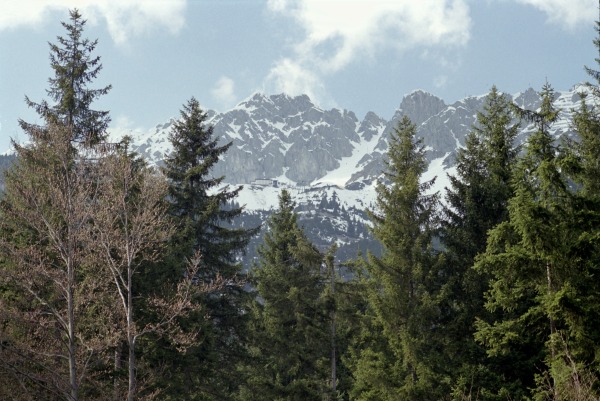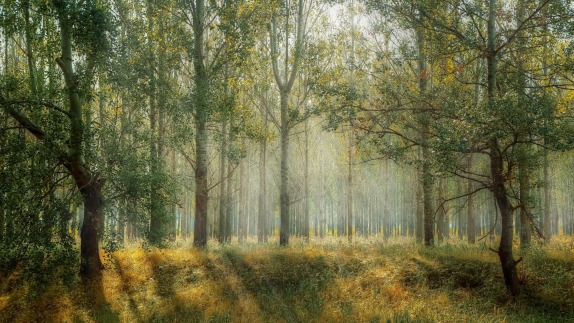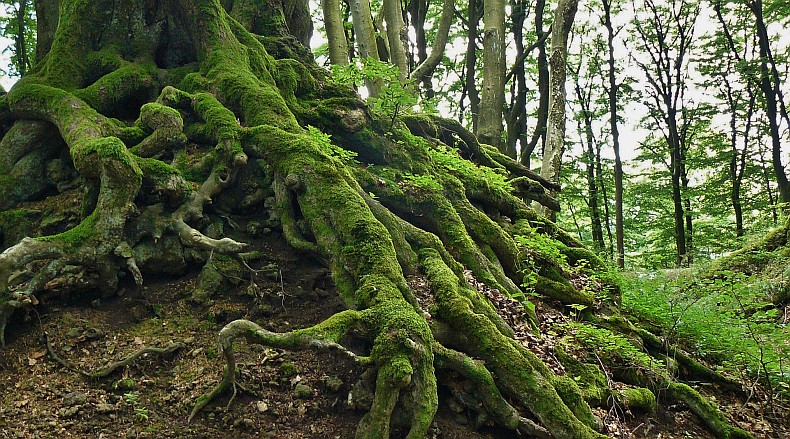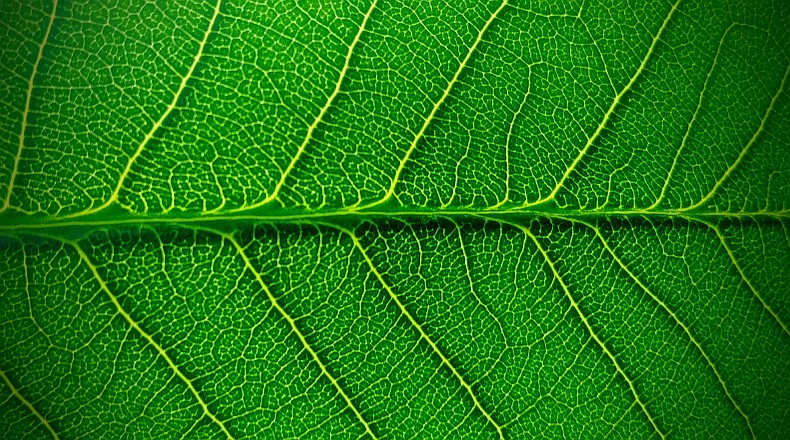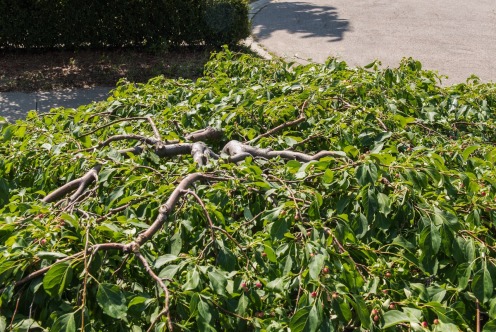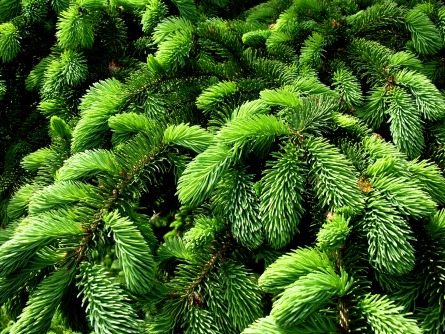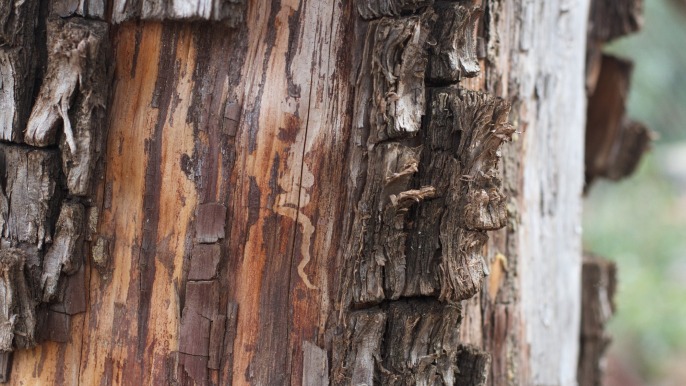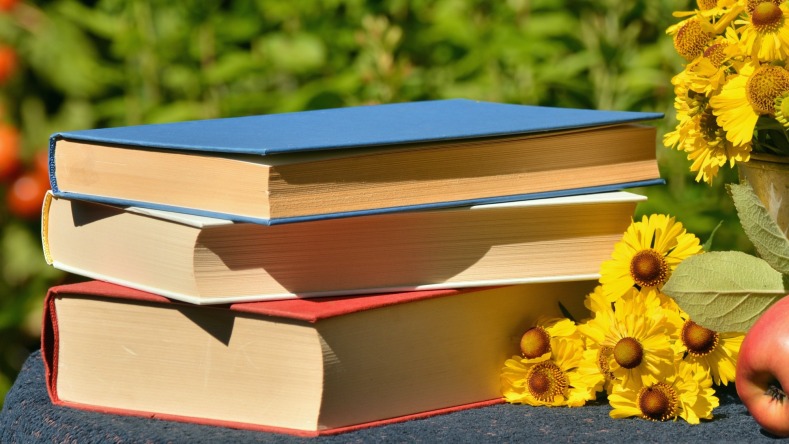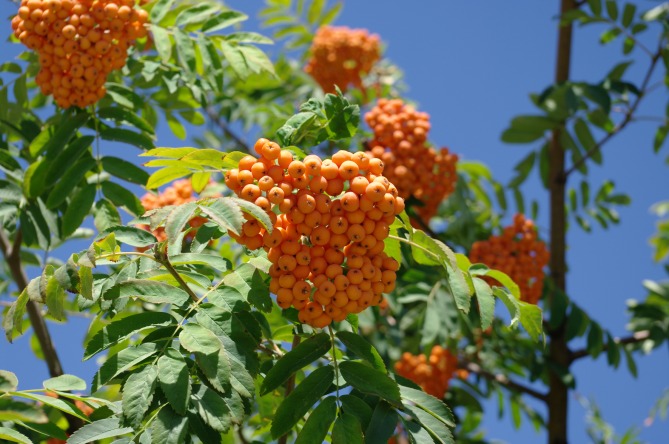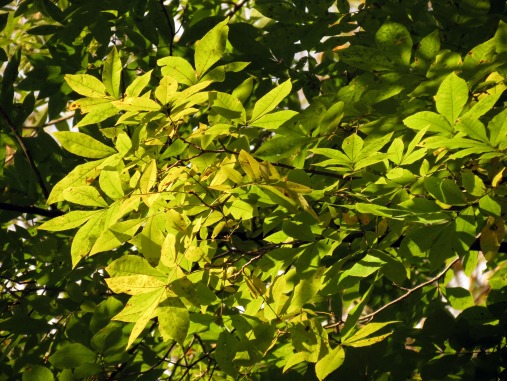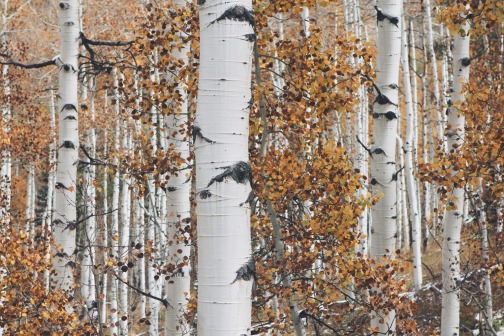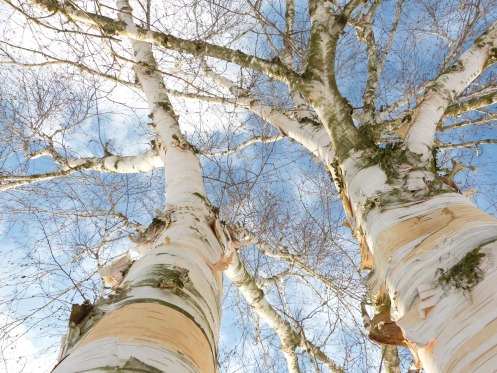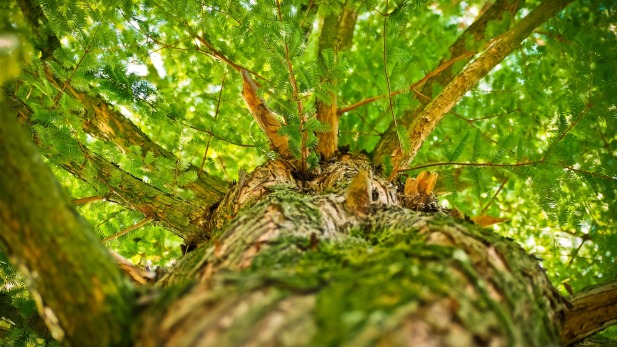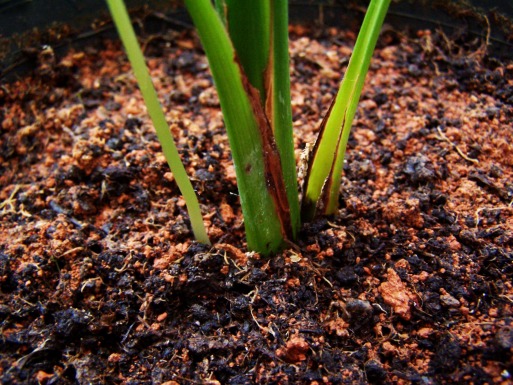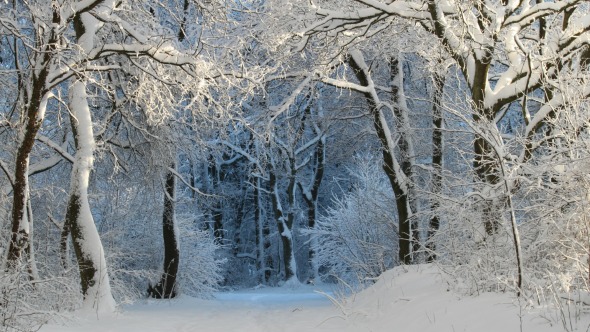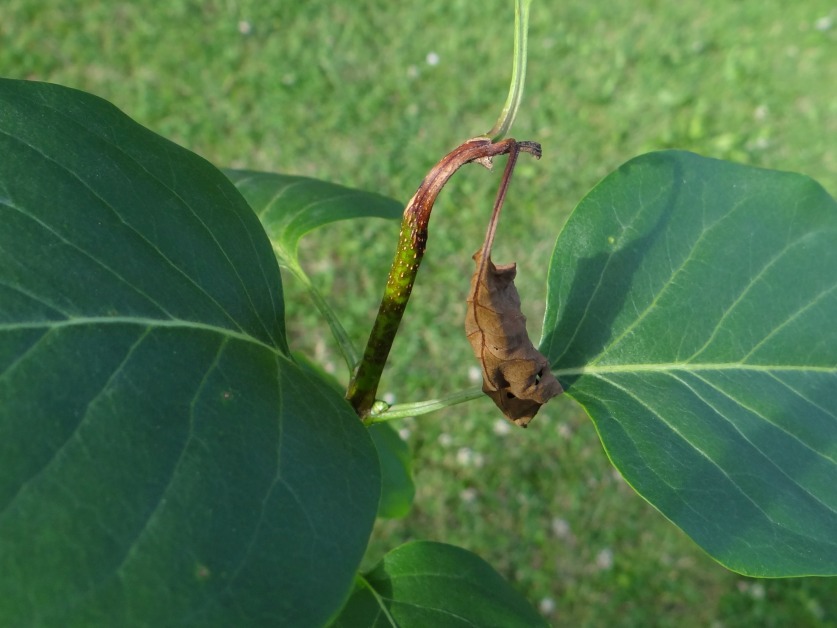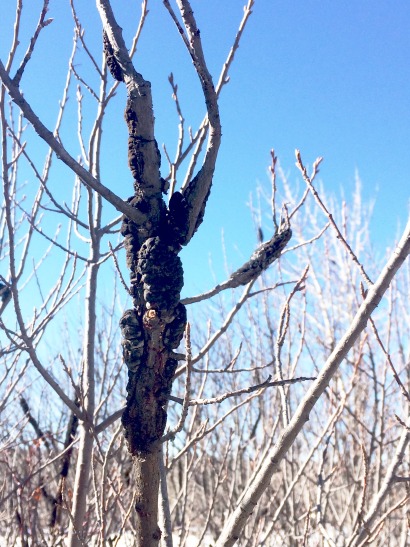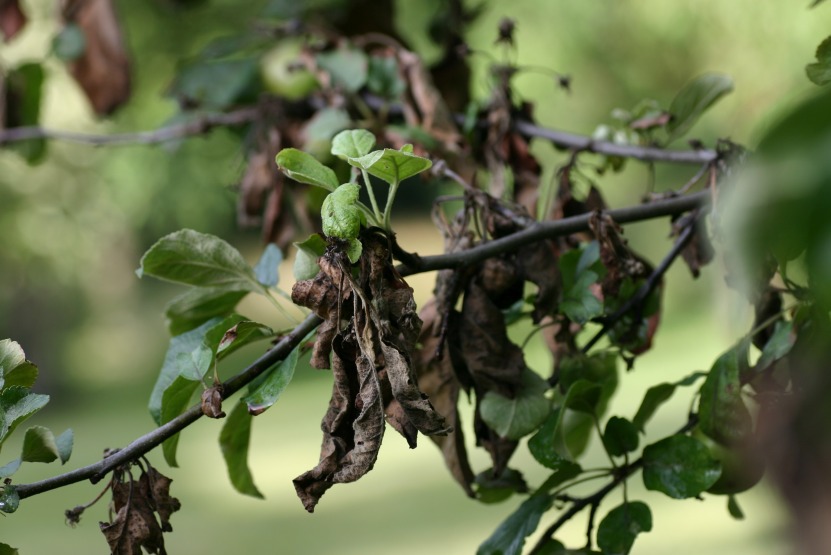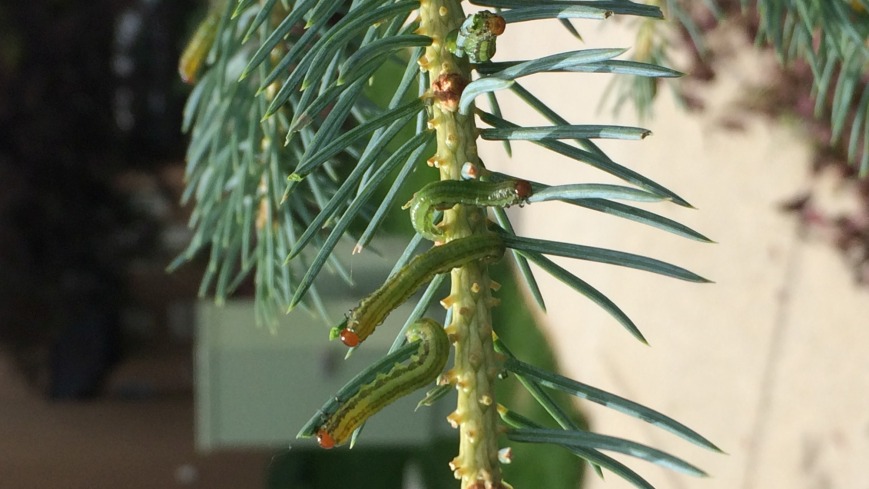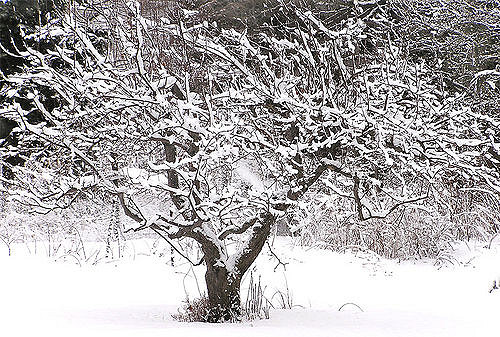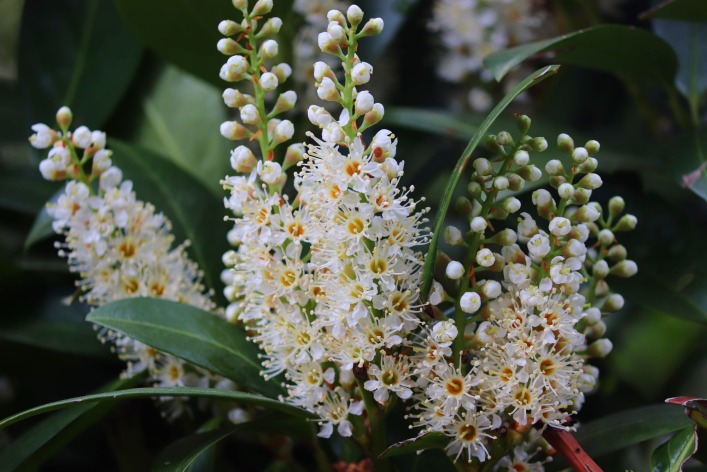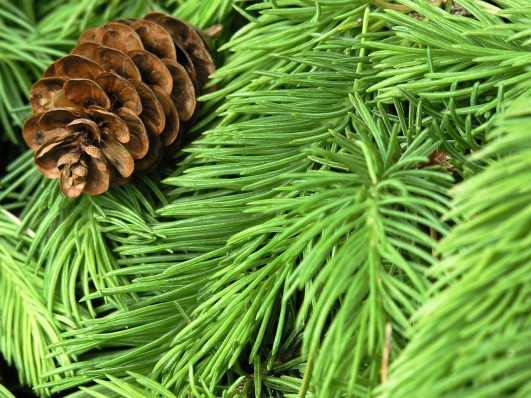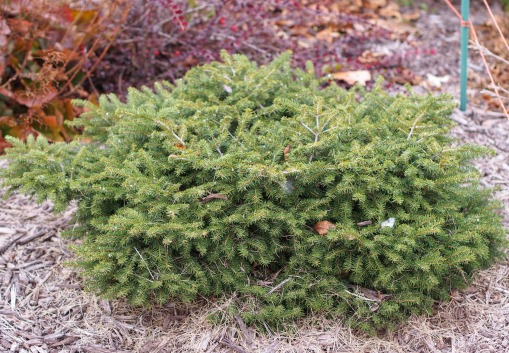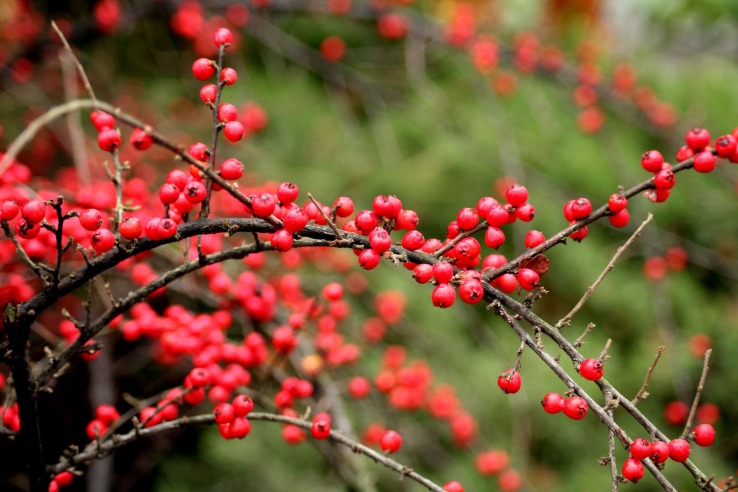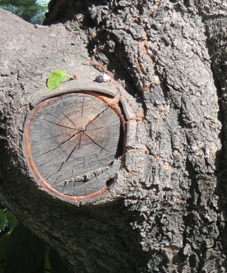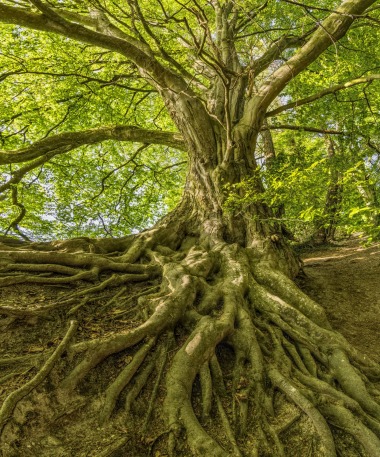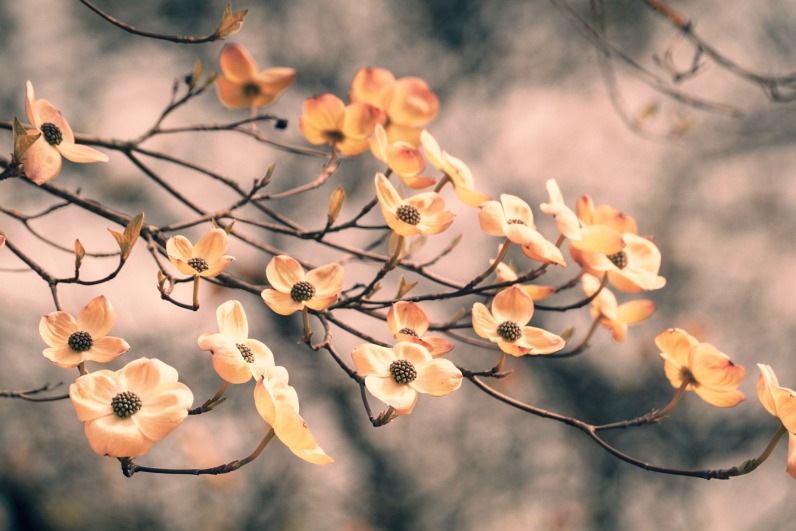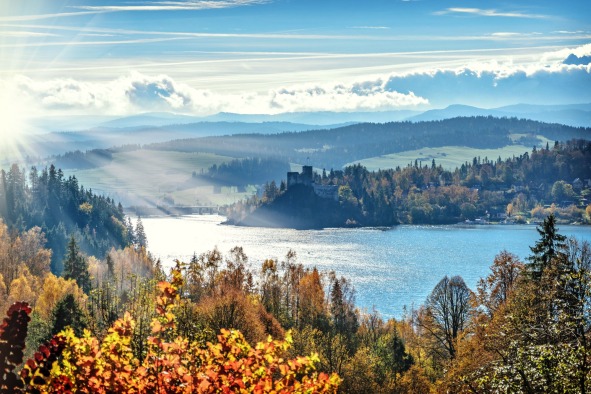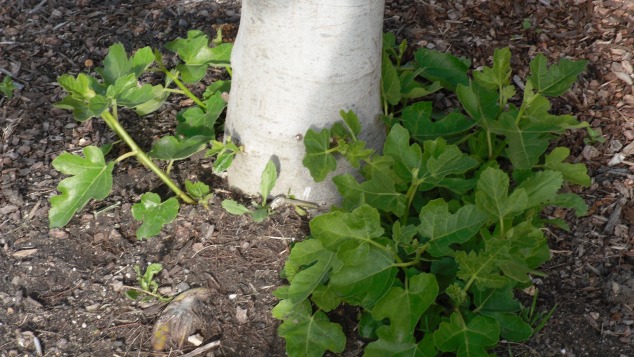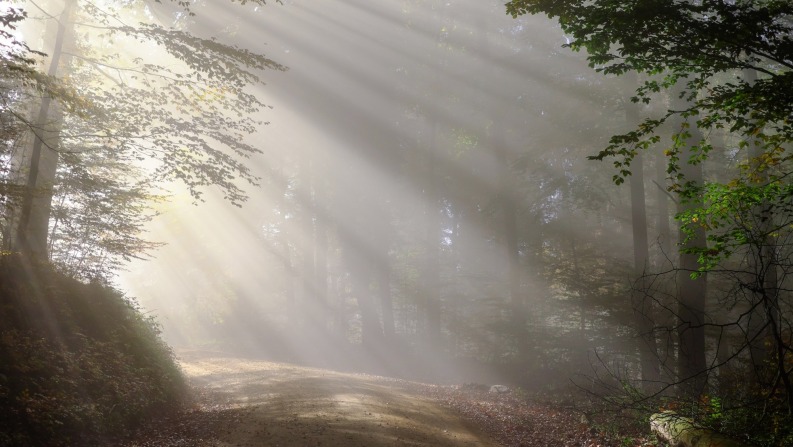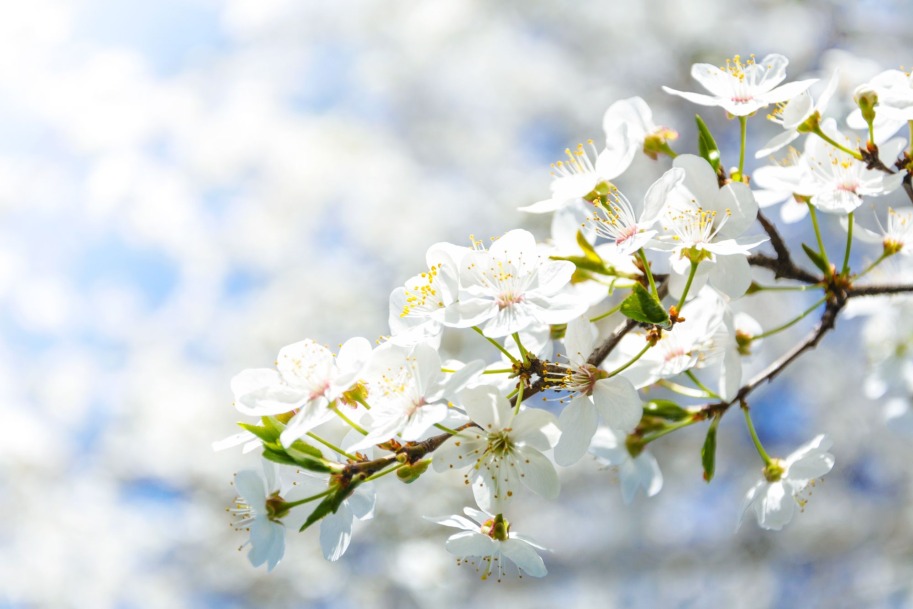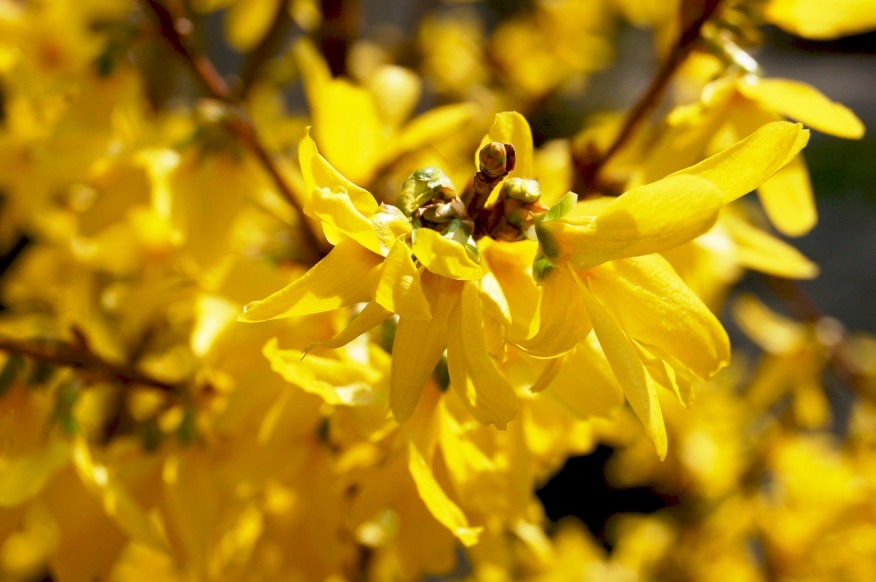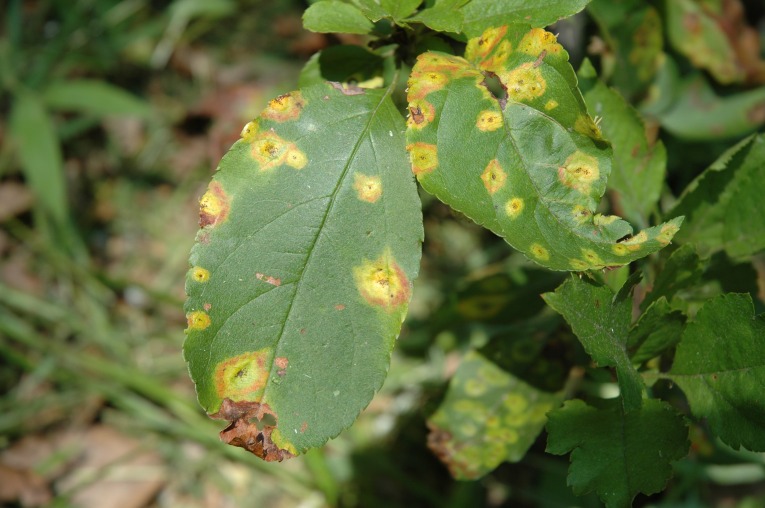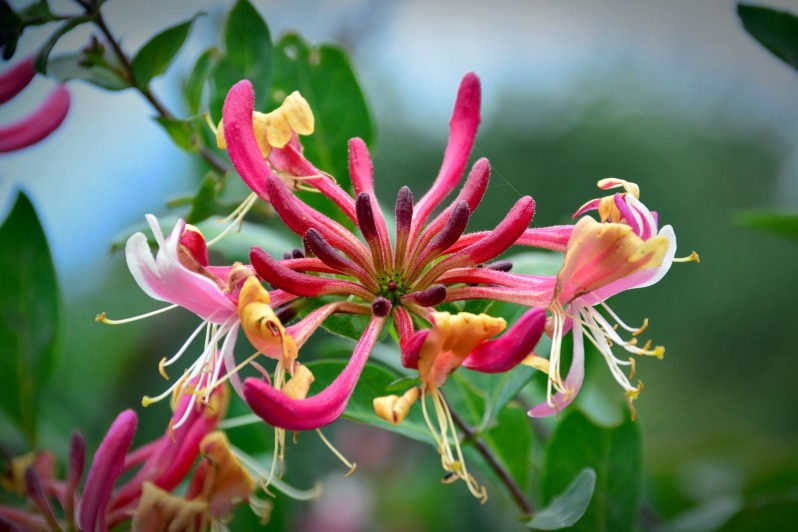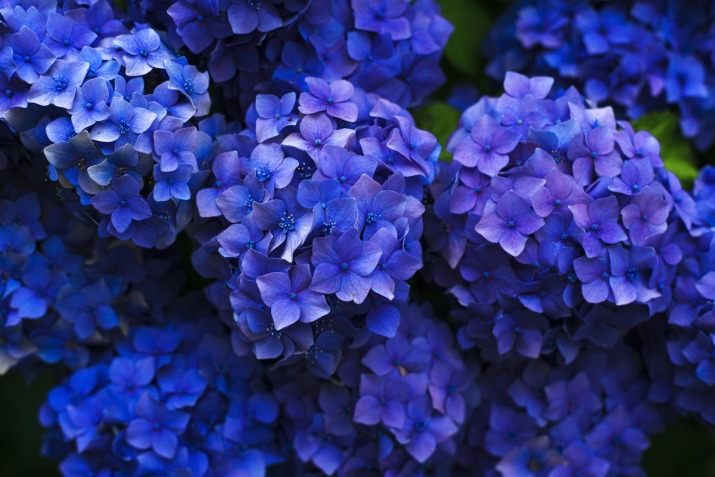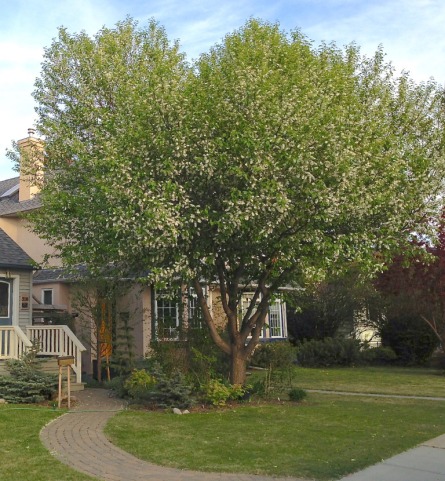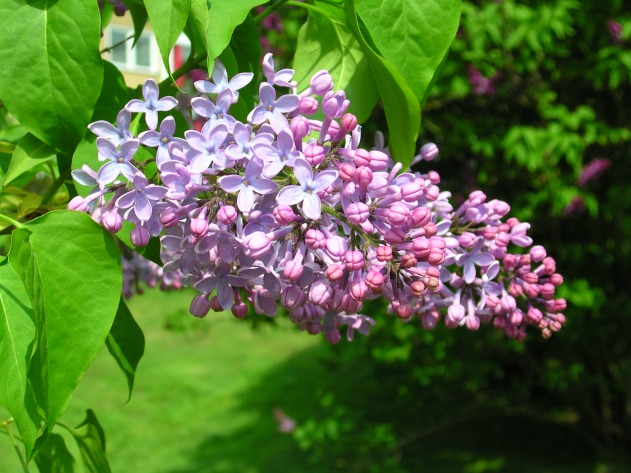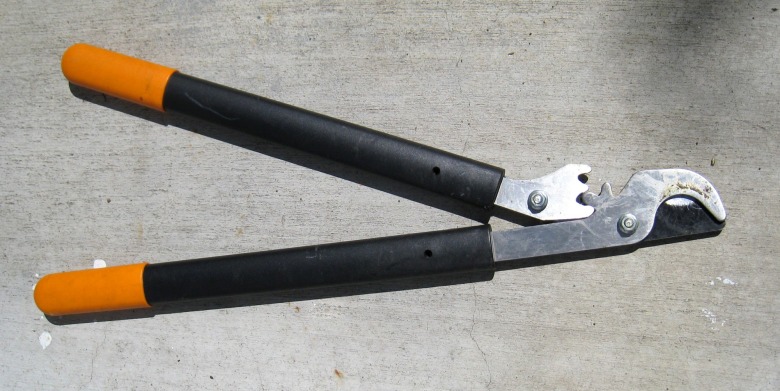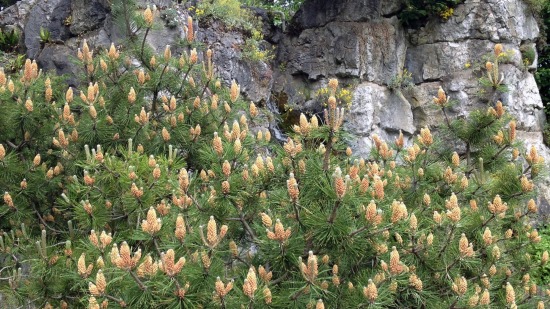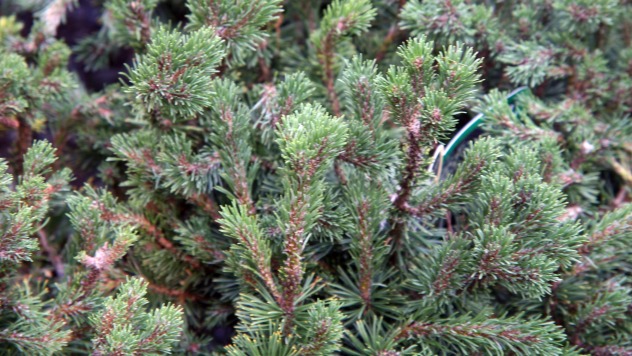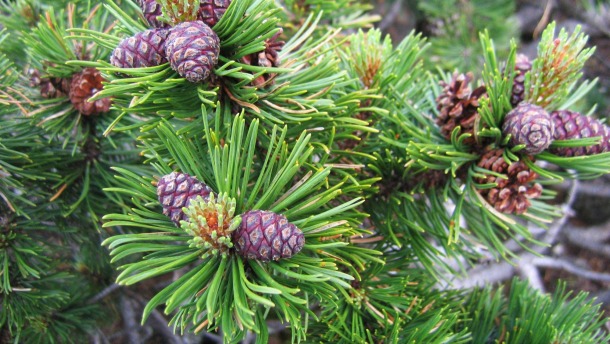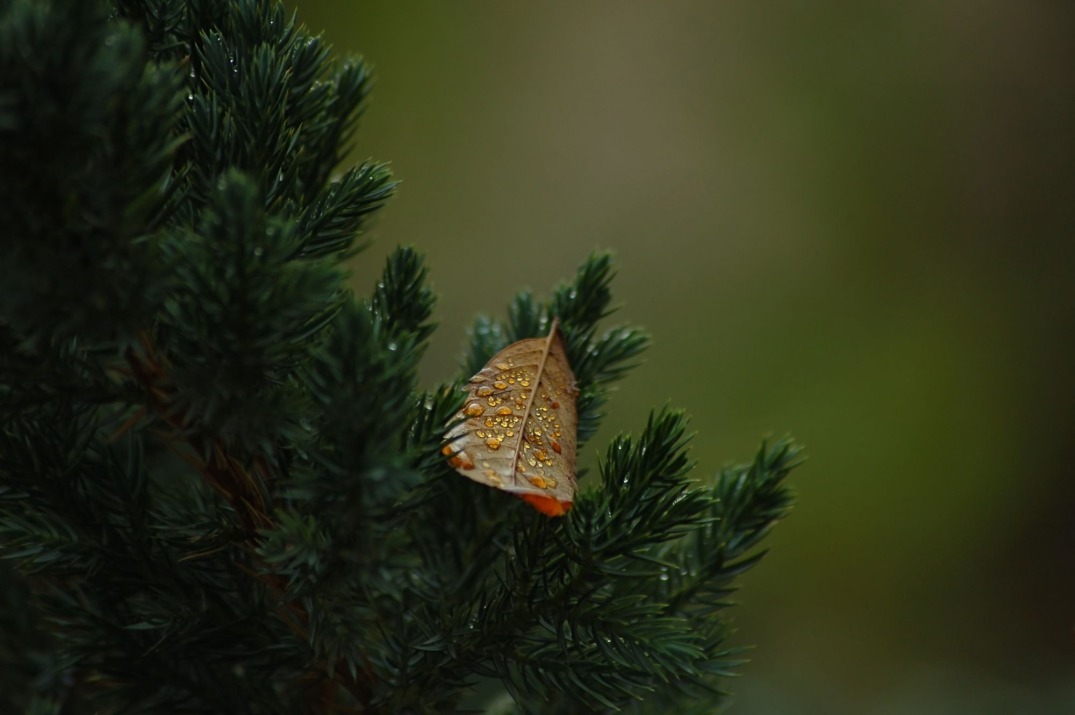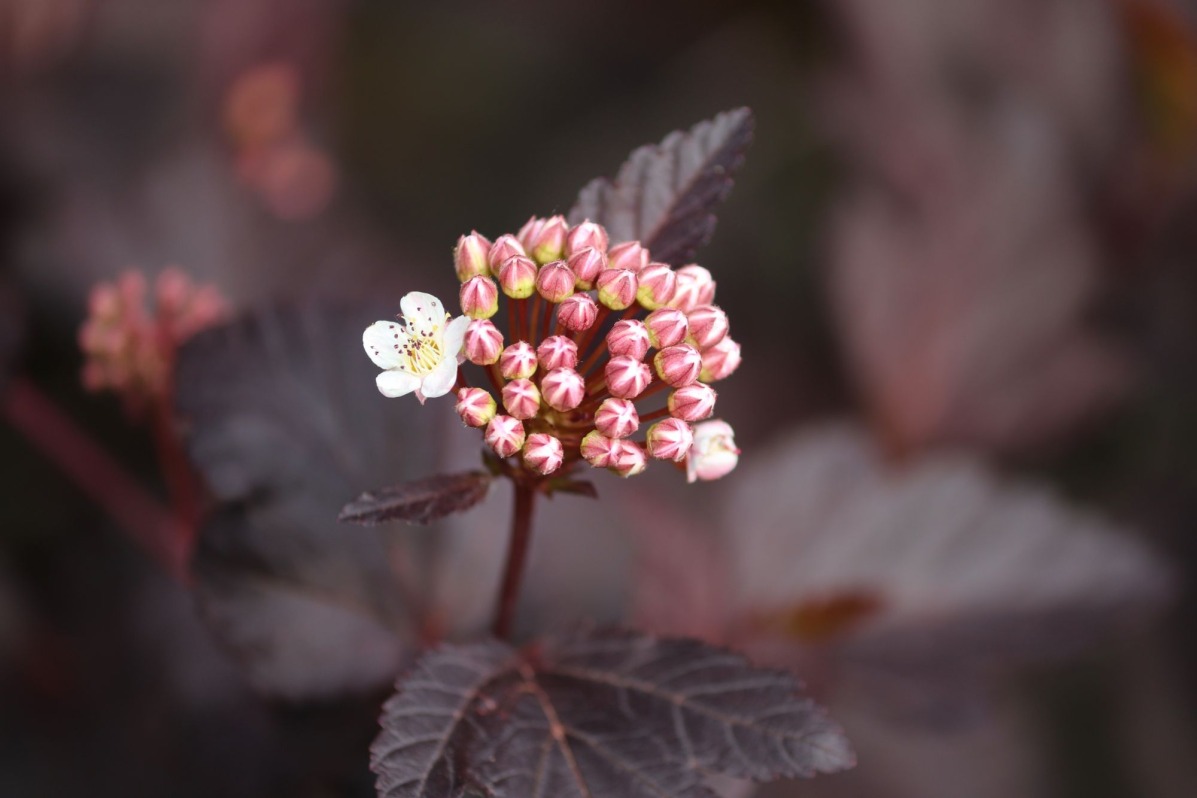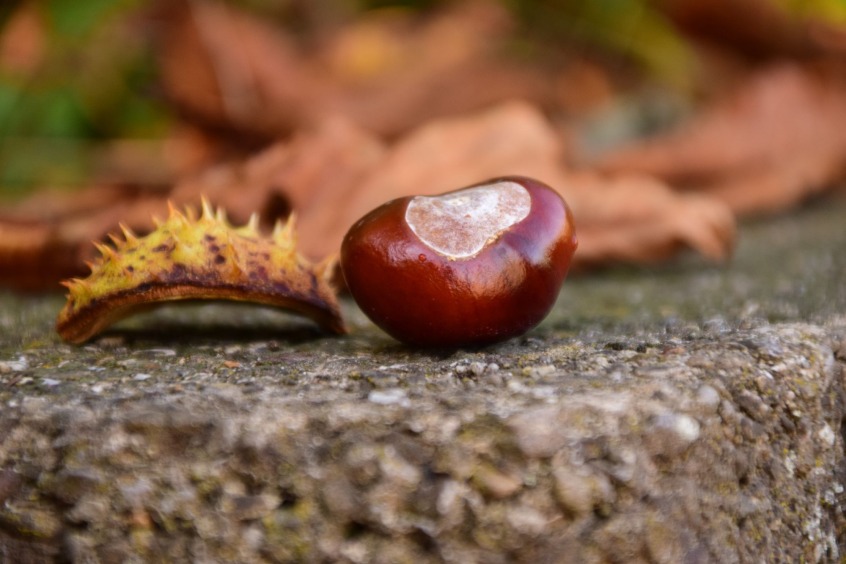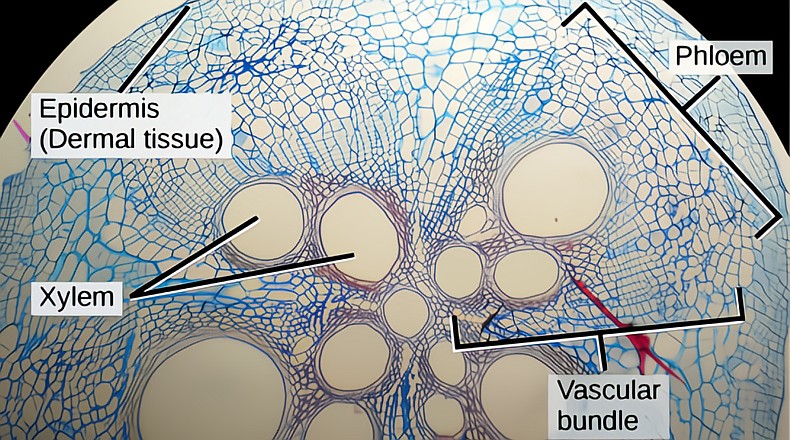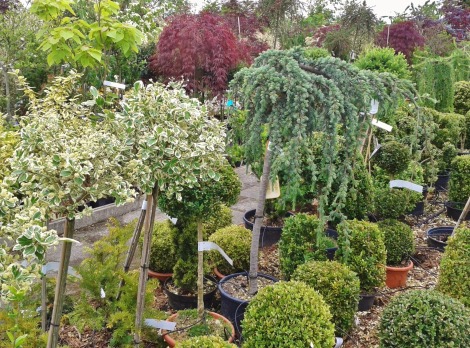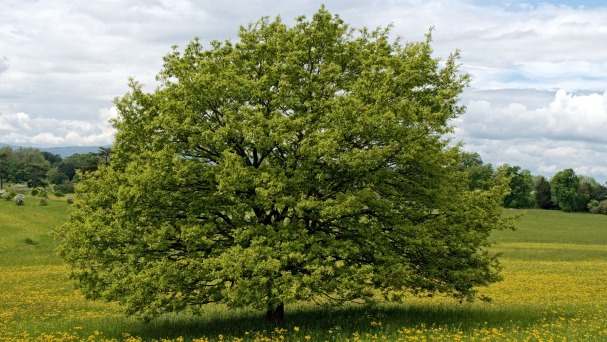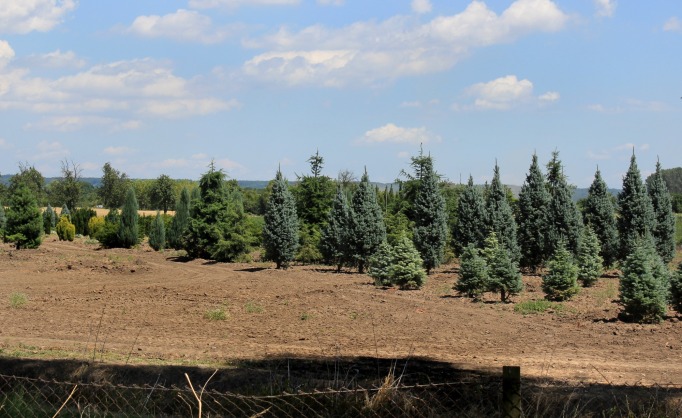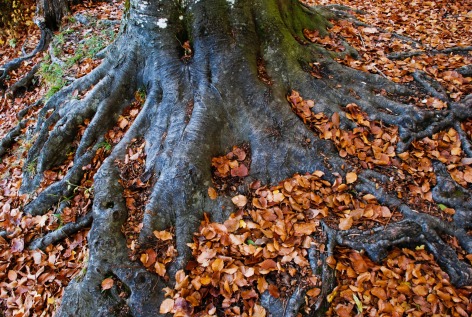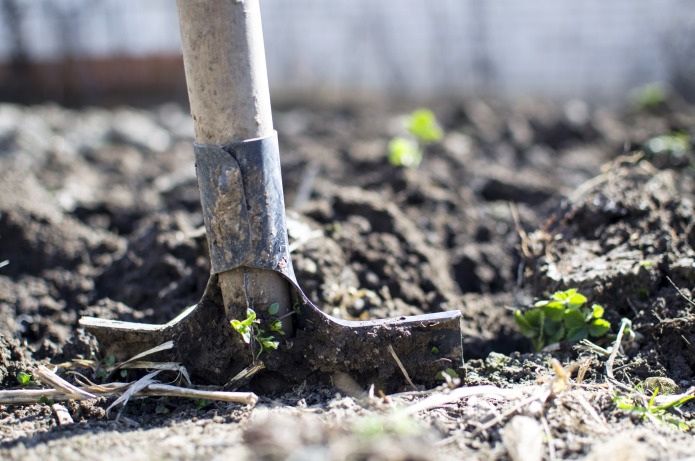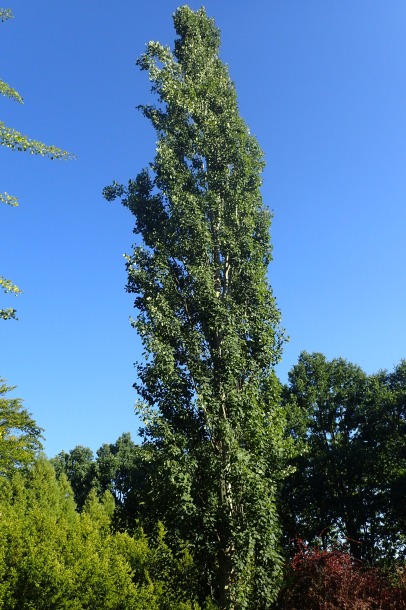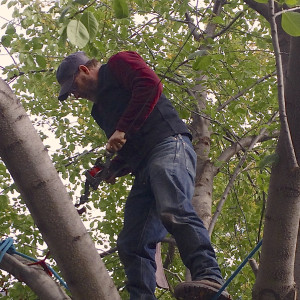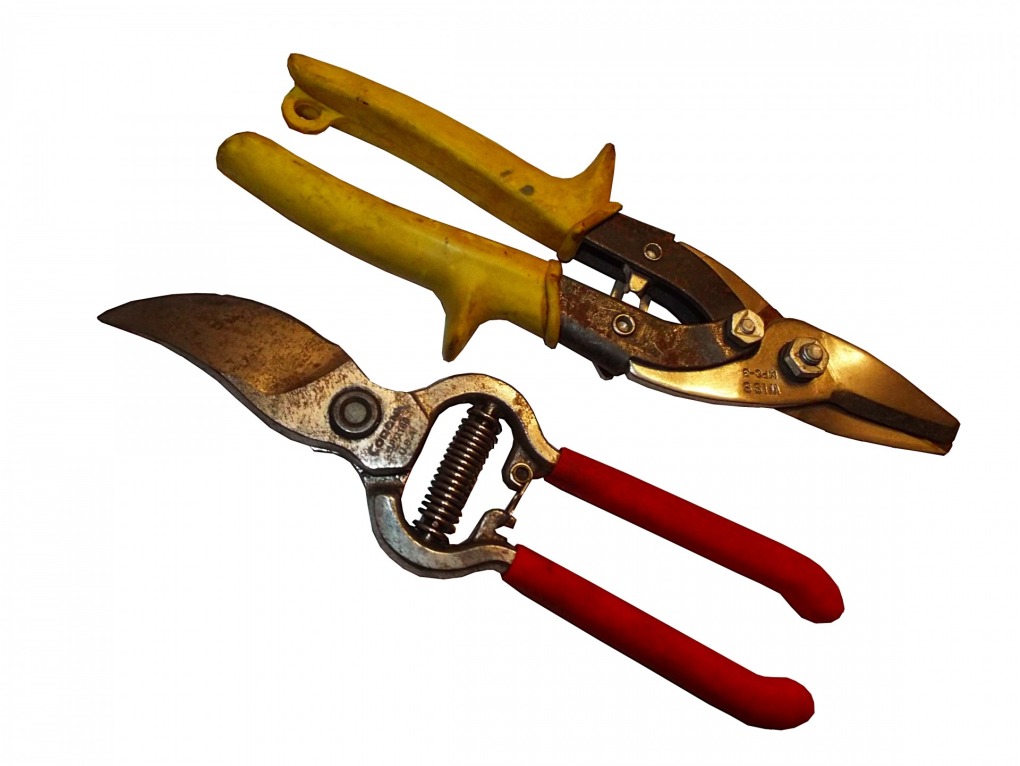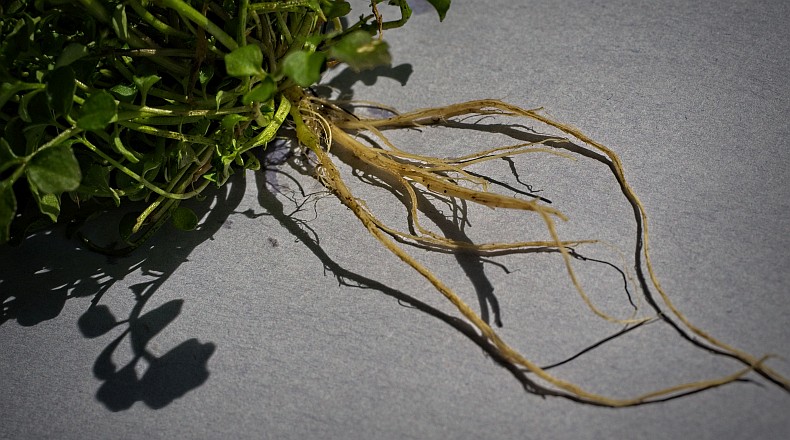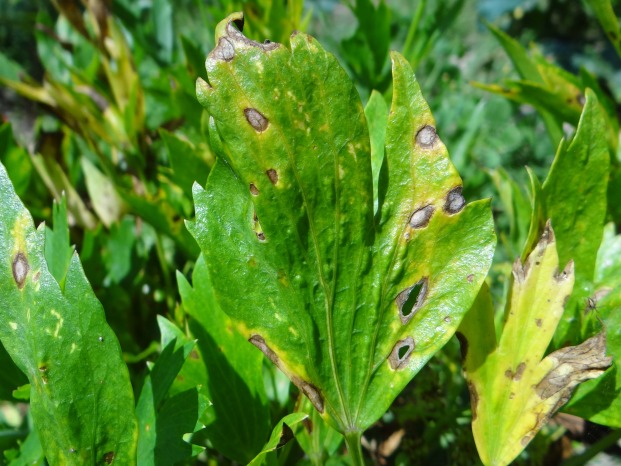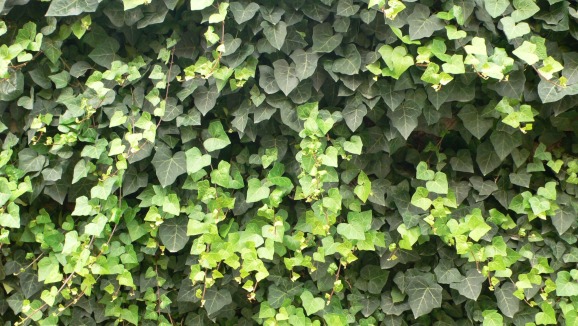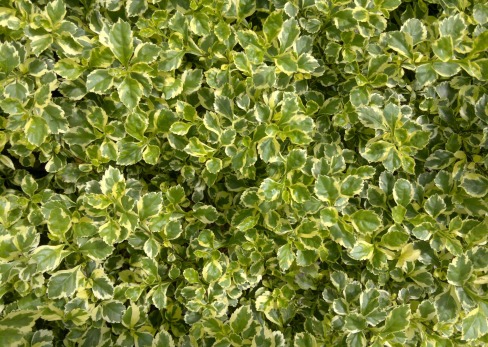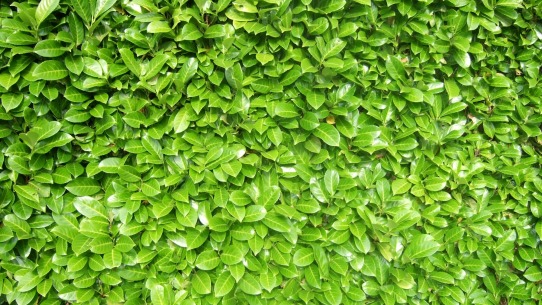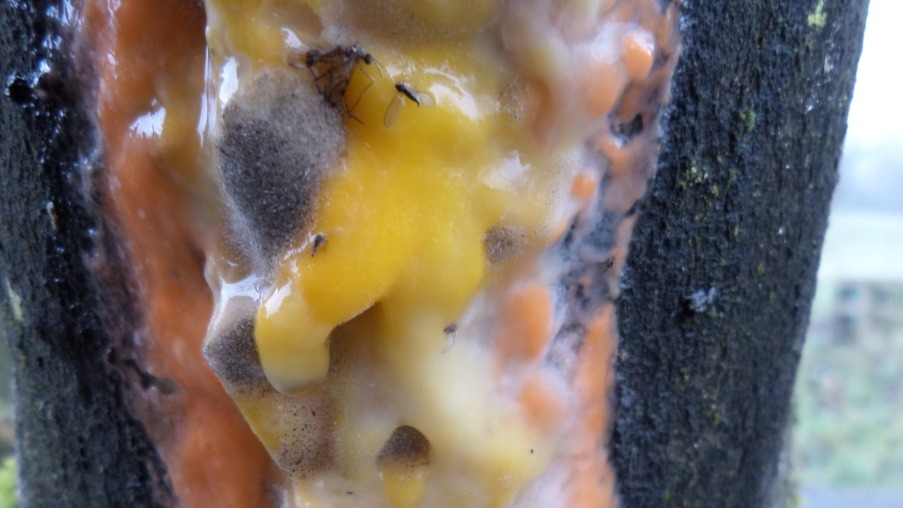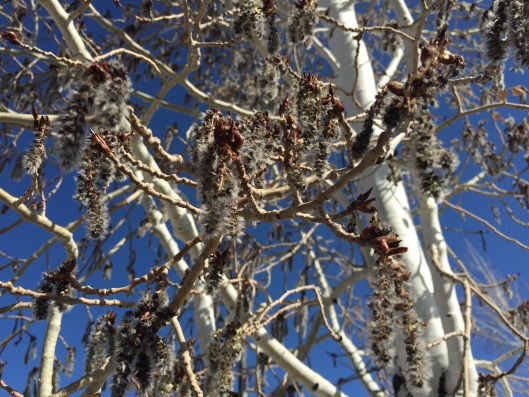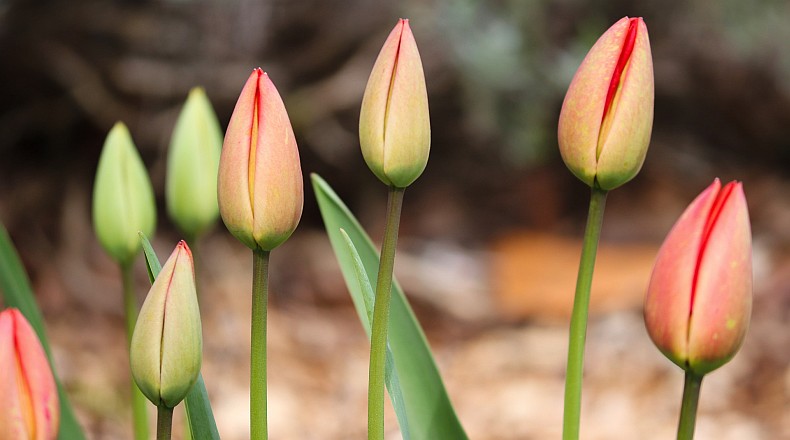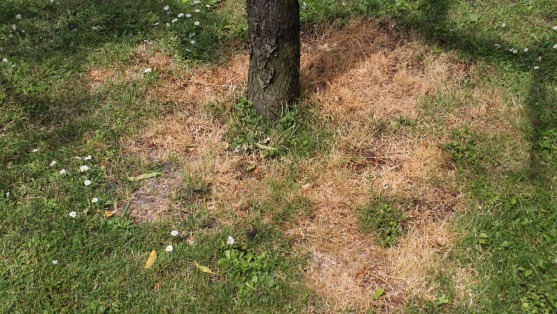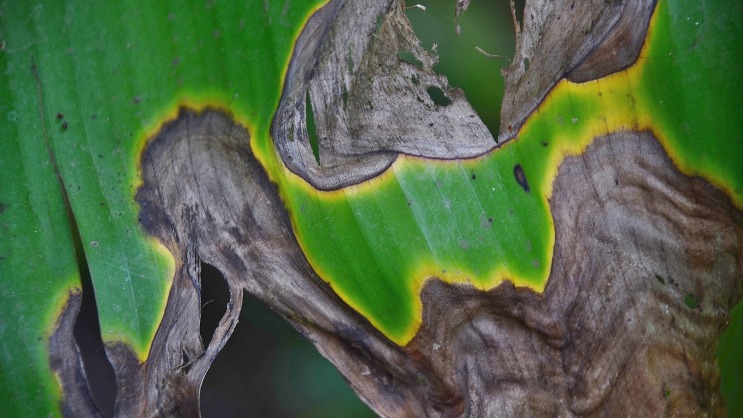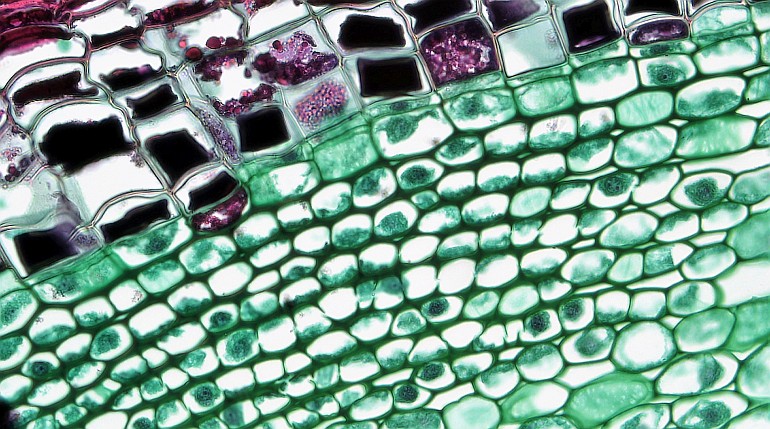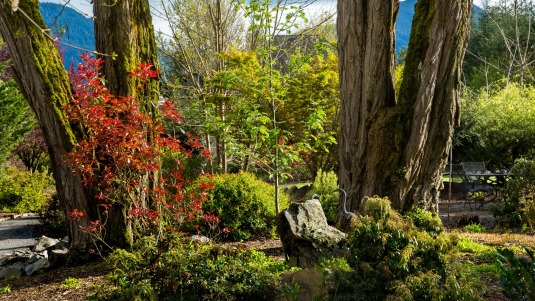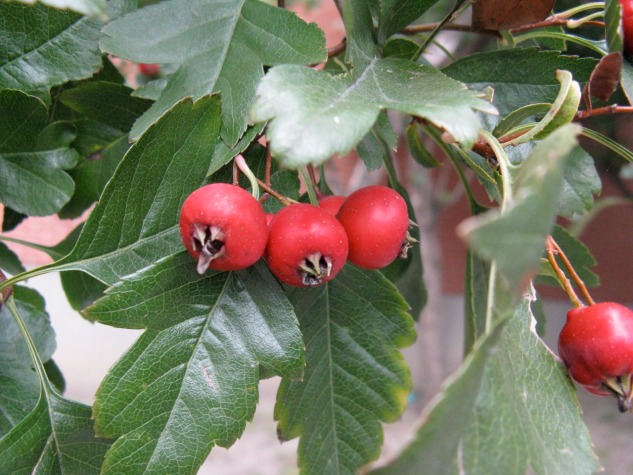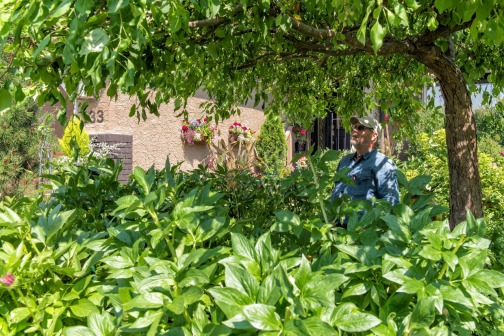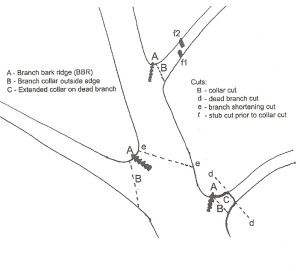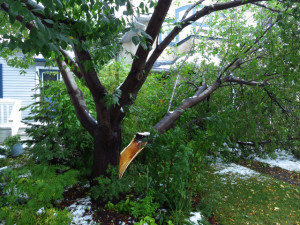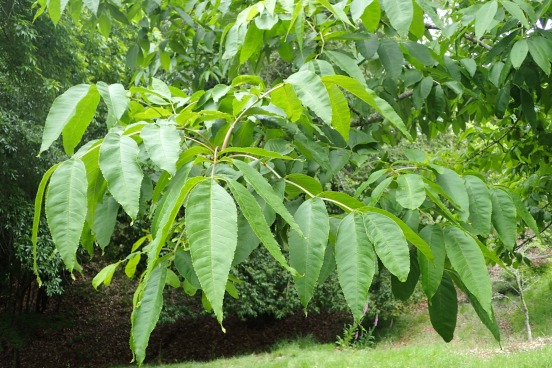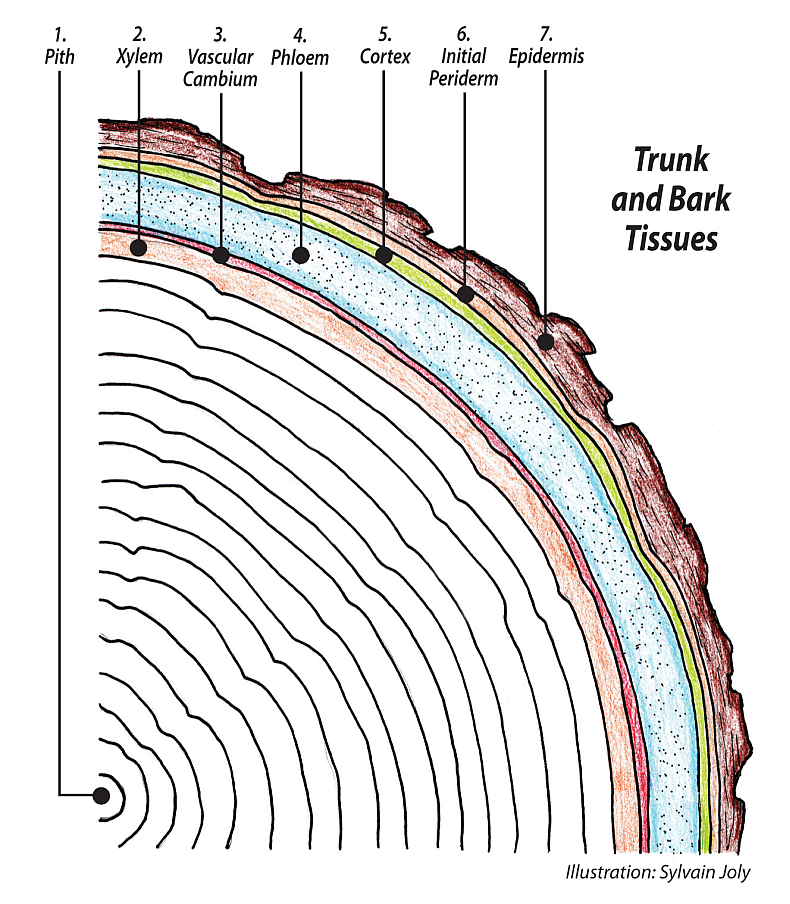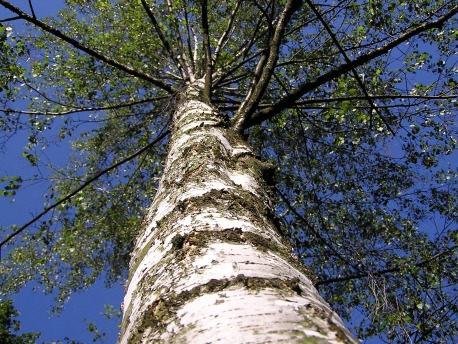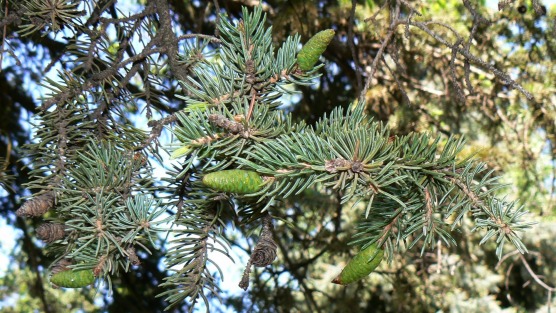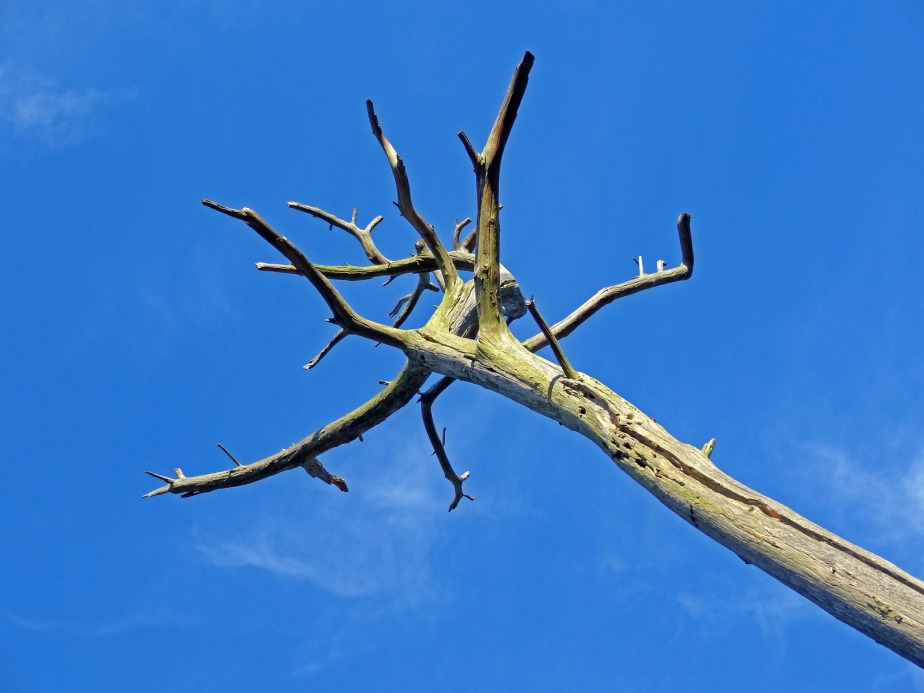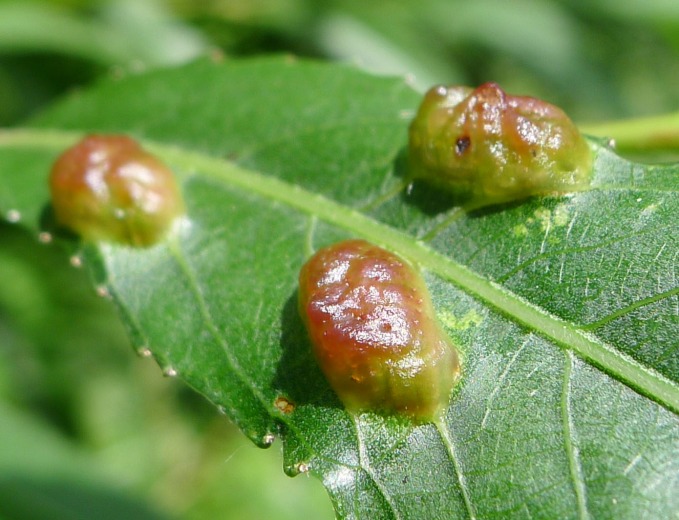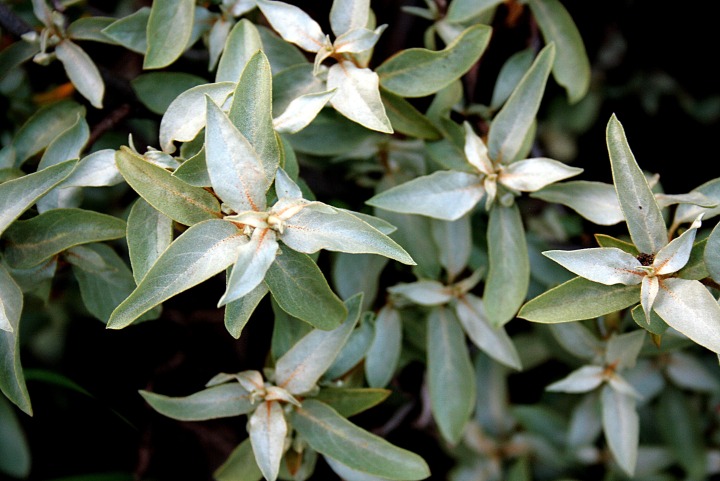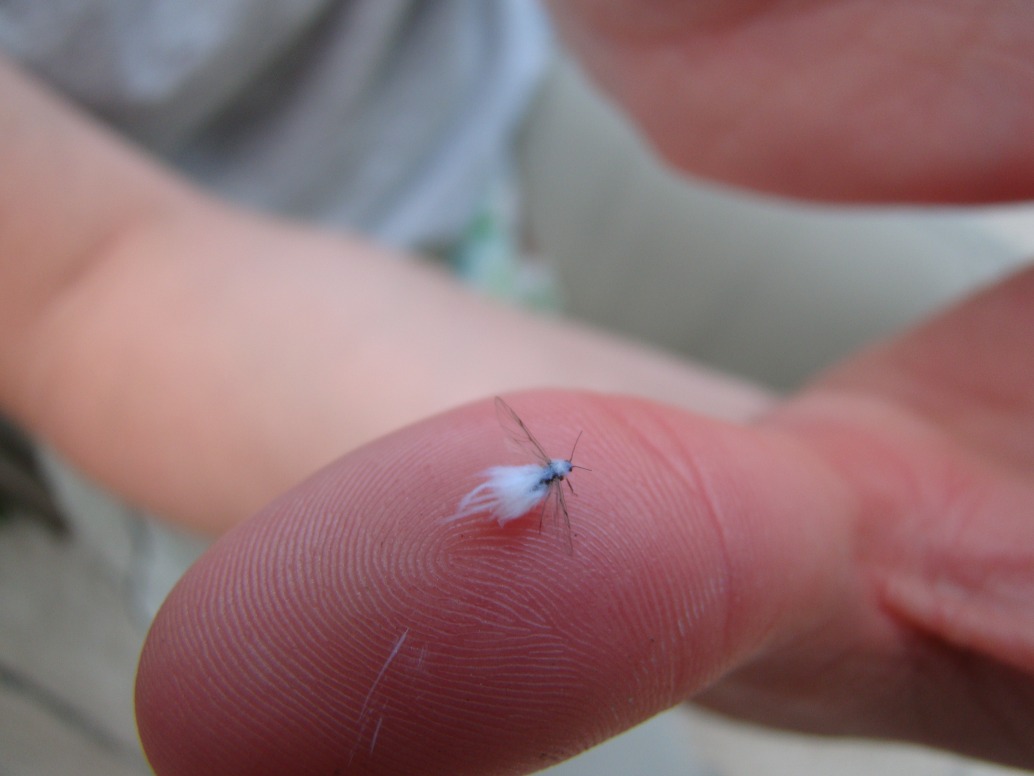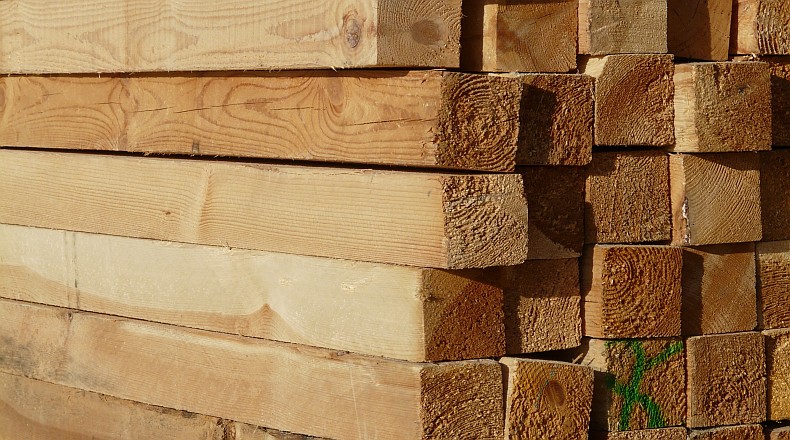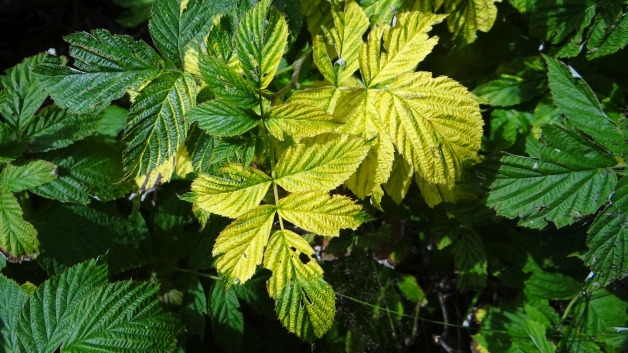Tree Care Articles
My articles page is the place where I have written about most aspects of arboriculture in Calgary. Everything in an arborists' trade, from tree care, trimming and pruning, arbor care, and even being a tree doctor. There are over 150 separate tree resource articles arranged alphabetically. Whether it's, "a mindset for healthy trees" all the way through to "yellow leaves", most of the important aspects of Calgary tree care are included. Have a look, prairie hardy fruit trees, selecting evergreens, tons on planting and pruning, please enjoy this free resource.
If you'd like to take a deeper dive into the internal workings of trees, check out my Botany Talks.
Western Gall Rust of Pines
- Details
- Written by Kevin R. Lee Kevin R. Lee
- Published: 15 April 2018 15 April 2018
In Calgary this fungus, a rust, is found mostly on Mugos. Other susceptible pine species include jack, lodgepole, ponderosa, Austrian, and Scots pines.
Easily identified by woody balls formed on branches, they can be double the diameter of the parent branch. As with all rusts, a powdery orange (rust) colored surface appears, usually in June. This is the arrival of the spores. Unlike most rusts, this species does not need an alternative host, and can pass easily from pine to pine.
Spores move in the wind and infect young shoots. Months later small galls appear, but do not produce spores till the second year. Galls that grow all the way around a branch, usually kill that branch. Galls formed on the main stem of small trees are at a place where it is easier for the trunk to break. When I find these galls, I remove them.
Random thoughts from a Calgary Arborist and Tree Surgeon
- Details
- Written by Kevin R. Lee Kevin R. Lee
- Published: 14 April 2018 14 April 2018
When you make inquiries about a new set of tires, it is a known commodity, and price differences will show that. You are comparing apples to apples. When you engage a number of arborists to bid on pruning it is more like comparing apples to refrigerators. The main things you buy from an arborist are attitude, experience and knowledge. Every one knows approximately what the the job is worth in dollars, but when you compare attitudes there will be a great difference. You are not buying a set of tires, but trying to help a living being. If you could magically have 20 arborists prune the same Tree, some of the results would be beautiful and healthy, some would have received more damage than they should, and some would be hacked away enough to seriously threaten the Tree's state of health.
Most of these jobs would align in a very competitive group pricewise. Price is no indication of quality. Price is not a good way to pick the person who is engaged to work with something living, something where their actions can do good or harm.
Whether it's your dog or your Tree that needs help , use your gut to help make your choice. Someone who is there to help, with the right energy, feels good. Someone who isn't, doesn't.
In Defence, the Bronze Birch Borer (BBB)
- Details
- Written by Kevin R. Lee Kevin R. Lee
- Published: 13 April 2018 13 April 2018
This meek little fella is used as one of our most frequent scapegoats.
Scapegoat for what? Our inability to water our birch Trees properly. Nothing better
than having a bug to blame, especially if they can't defend themselves. The literature is full of quotes like this, "The borers' effects on mature Trees under STRESS that can be devastating". Key words, under stress. Another, "Drought conditions coupled with high temperatures lead to crown die-back and subsequent susceptibility to borer attack".
During my climbing career, I climbed and pruned many birch Trees, especially our favorite, the Cut Leaf Weeping Birch, CLWB. I have never once seen borer activity in healthy Trees. Show me a water-stressed, limp-looking, crown-full-of-deadwood CLWB and I may be able to show you some BBB.
The borer's life cycle goes like this. Adults emerge in late June and live approximately 3 weeks. They are about .5 inches long and have a metallic bronze appearance. Eggs are laid in the bark of weak or dying branches. The eggs hatch in two weeks and go through five metamorphoses, (instars) happily munching weakened birch tissue the while. Content, they overwinter as pupae to complete the cycle.
Birch Trees have the highest water requirements of any Tree planted in Calgary. Calgary is not a environment where any birch tree would choose to grow. The closest we come are two very tough birch shrubs.
If you love this Tree, love this Tree, water it.
If you do you will never see this insect.
See my article, Watering Calgary Trees.
(Photo credit: “bronze birch borer (Agrilus anxius)" by Whitney Cranshaw, Colorado State University, Bugwood.org, licensed under CC BY 3.0 US.)
Eating Apples and Other Hardy Prairie Fruit
- Details
- Written by Kevin R. Lee Kevin R. Lee
- Published: 12 April 2018 12 April 2018
The prairies generally and the chinook belt of Alberta specifically have always been a tough place to grow fruit. Thankfully, plant breeders have been working on this problem for over 100 years and their and many nursery people's efforts have yielded good results.
One of the strongest supporters and tireless workers in this field has been the University of Saskatchewan. Their agricultural research into prairie fruit production is a decades old program. For plenty of good information see www.fruit.usask.ca.
There are many, many apples and fruit varieties sold, some good, some not. As with all Trees in this area the test of time is indisputable. Like the latest fashion varieties drifting along the cat walk, many will never be seen again. If you find an apple or fruit variety you like, please do a little reading; you will save yourself a lot of trouble.
Eating apples:
The first 4 are excellent, followed by good runners-up.
- Norkent, semi-dwarf Tree, matures late August
- Haralson, green with red fruit, late September
- Fall Red, large apples
- September Ruby, bright red, mid September
- From University of Saskatchewan, Prairie Sensation, Autumn Delight, Misty Rose
- Harcourt, green red, mid September
- Norland, green with red stripes, late August
- Carroll, sweet, mid September
Apricot varieties:
- Westcot
- Brookcot
Saskatoon varieties:
- Parkhill
- Smoky
- Thiessen
Dwarf sour cherries:
- Carmine Jewel,
- Juliet
- A little taller is the champ, the Evans
Black Currant:
- Ben
Red Currant:
- Red Lake
- Honey Red
Plums:
- Patterson Pride
- Brookgold
Pears :
- John
- Thomas
- Ure
From my research, these are the cream. I haven't grown them all, but I want to. Another interesting link is The Urban Farmer
All of these plants except the Currants, are susceptible to either Fire Blight or Pseudomonas ; watch carefully and often.
Oyster Shell Scale
- Details
- Written by Kevin R. Lee Kevin R. Lee
- Published: 11 April 2018 11 April 2018
At this time oyster shell scale may be causing more damage than any other insect in the Calgary area. Cotoneaster has been the hardest hit, but other plants are also susceptible -- apples, ash, aspens and others.
Articles Index
- A Mind Set for Healthy Trees
- A New Tree Care Philosophy
- A Practical Working Model of Your Tree, Part One: Mostly Roots
- A Practical Working Model of Your Tree, Part Three: Leaves
- A Practical Working Model of Your Tree, Part Two: Trunk and Stem
- A weeping apple, some deer, and an arborist
- A Year in the Life of Your Tree - 1
- A Year In the Life of Your Tree - 2
- A Year In the Life of Your Tree - 3
- A Year In the Life of Your Tree - 4
- A Year In the Life of Your Tree - 5
- A Year In the Life of Your Tree - 6
- A Year In the Life of Your Tree - 7
- A Year in the Life of Your Tree - 8
- An arborist thinks on compartmentalization
- An Arborist's Education
- Ash Leaf-Cone Roller
- Ash Trees
- Aspens
- Birch
- Botany 1: The whole tree
- Botany 2: What do trees eat?
- Bud Scars
- Burning Bush
- Calgary Soils
- Calgary weather, snow pack, and the drought
- Calgary, from a tree's perspective
- Calgary's Most Dangerous, Dutch Elm Disease
- Calgary's most dangerous: Pseudomonas syringae
- Calgary’s most dangerous: Black knot
- Calgary’s Most Dangerous: Fire blight
- Calgary’s Most Dangerous: The Yellow-Headed Sawfly
- Caragana
- Caring For Your Trees This Winter
- Cell Walls
- Cherry Shrubs
- Cherry Trees
- Conifer Introduction
- Conifer Shrubs
- Conifers
- Cotoneaster
- Cranberries
- Currants
- Debunking Old Tree Myths
- Demystifying Tree Pruning
- Diagnosing Tree Problems
- Diplodia Gall of Poplar
- Dogwoods
- Dr. Alex Shigo
- Eating Apples and Other Hardy Prairie Fruit
- Elders
- Elms
- Epidermis
- Fall Needle Drop of Conifers
- Fertilizer
- Fertilizer 1
- Fertilizer 2: Trees
- First post Feb 23 2018
- Flowering Crabs
- Forsythia
- Fungal afflictions
- Growing Trees in Calgary
- Growing trees in Calgary, hands-on
- Haiku for spring
- Hardiness Zones
- Hawthorns
- Honeysuckles
- How to Have a Successful Tree
- Hydrangea
- In Defence, the Bronze Birch Borer (BBB)
- Introduction to Botany Talks
- Kate's Mayday
- Lack of connection
- Leaves
- Lilacs: French
- Lilacs: Pruning
- Linden
- List of Best Calgary Tree Choices - Evergreens
- Maintaining your pruning tools
- Maples
- Meristems: SAM and RAM
- Mid-Season Gratitude Post
- Mock Orange
- Mountain Ash
- Mugo Pines 1
- Mugo Pines 2
- Mugo Pines 3: Pruning
- My readers, my reasons
- Native Shrubs
- Needle Casts of Spruce
- Ninebark
- Oaks
- Ohio Buckeye
- Old Hacked Apple Trees -- Pruning a Tangle
- Organic Tree Work, Empowering Trees and People.
- Oyster Shell Scale
- Phloem
- Phomopsis Canker of Russian Olive
- Planting 1: Species selection
- Planting 2: Site selection
- Planting 3: Buying your tree
- Planting 4: Root crown identification
- Planting 5, Digging the hole, planting the tree
- Planting 6: Staking
- Planting 7: Watering
- Planting a Tree - Selection
- Planting a Tree - Setting, Staking and Watering
- Polemic and straight talk: the Swedish Columnar Aspen
- Poplars
- Proper Tree Pruning
- Pruning - More Reasons Why
- Pruning in Calgary with Nature in Mind
- Pruning Theory - Tools
- Pruning Theory - Why?
- Pruning tools you need
- Quotes
- Random thoughts from a Calgary Arborist and Tree Surgeon
- Reference books for Arboriculture
- Roots
- Russian Olive
- Septoria Canker on Poplar
- Shrub Introduction
- Shrub Pruning 1 - Theory
- Shrub Pruning 2 - Size Control
- Shrub Pruning 3 - Final
- Shrub Pruning for Size Control
- Shrub Pruning for Size Control 2
- Shrub Pruning Theory
- Slime Flux
- Soils - 1
- Soils - 2
- Spring?
- Stems
- Symptoms of a dry tree
- Symptoms of a sick tree
- The Mountain Ash
- The Three Cell Types
- Thinking of becoming an arborist?
- Toba Hawthorn: Pruning a tangle
- Tree Poem
- Tree Pruning Theory
- Tree Repair
- Tree Repair - 1
- Tree Repair - 2
- Tree Repair - 3
- Tree Repair - 4
- Trees and Their Interactions with Other Organisms
- Two Failures, Griffin Poplar, Manchurian Ash
- Vascular Cambium
- Walnuts
- Watering
- Watering a Birch
- Watering Calgary Trees
- Western Gall Rust of Pines
- What is Tree Whispering?
- When Should a Tree Be Removed?
- White Fly
- White Spruce
- Why is My Tree Dying?
- Willow Redgall sawfly
- Willows
- Wolf Willow
- Woolly Elm Aphid
- Xylem
- Yellow leaves: Chlorosis

